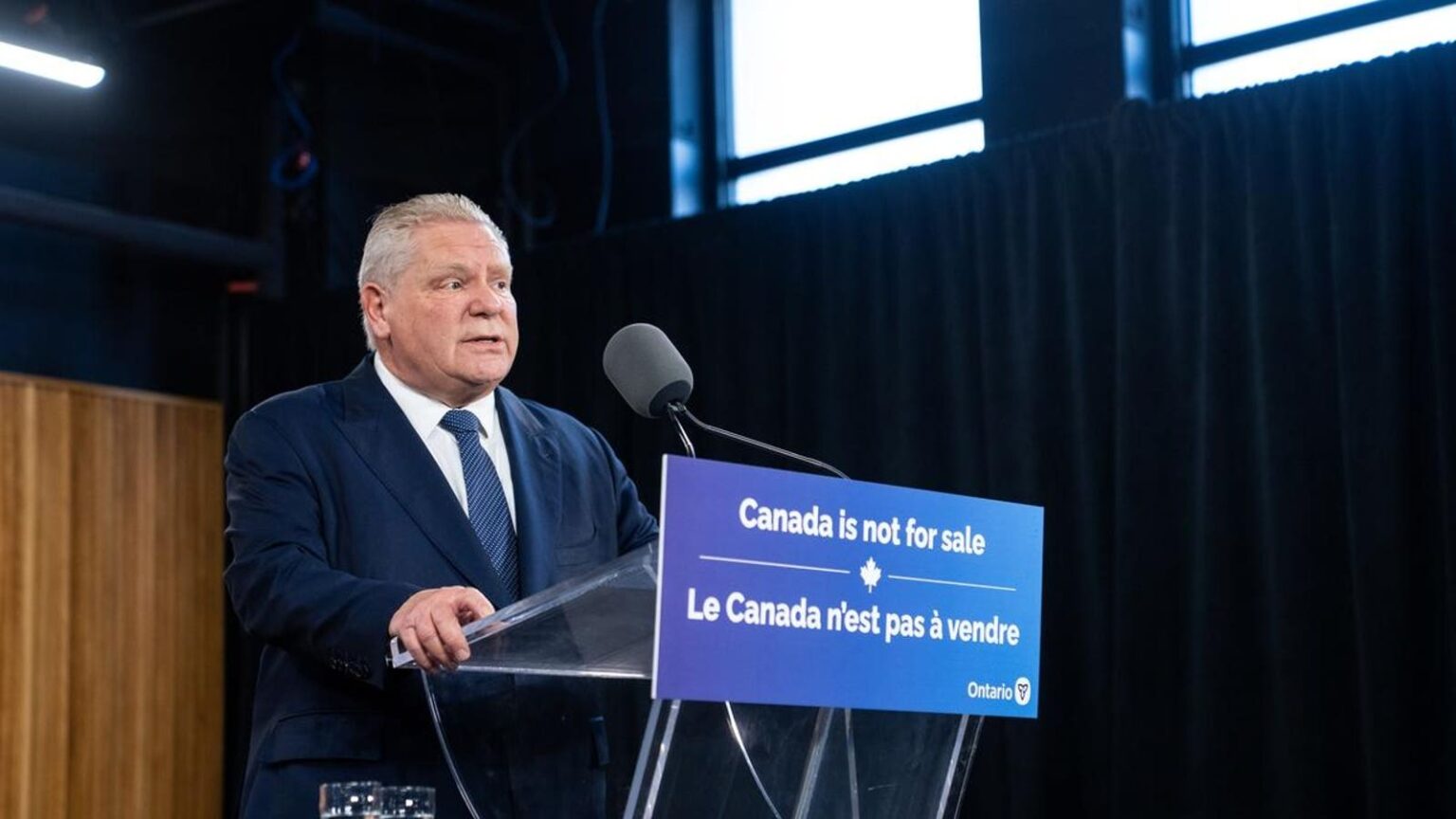TORONTO, CANADA – MARCH 10: Ontario Premier Doug Ford gives remarks at a press conference in … More
Getty ImagesHad Ontario Premier Doug Ford followed through on his March 10 threat to impose a 25% tax on his province’s electricity exports to the United States, it would have marked a historic first: the province of a G7 and NATO member using the “electricity weapon” against another member. The move was a response to another first: President Donald Trump’s tariff package against Canada (as well as Mexico and China), a historical ally of the United States. The package included a 10% levy on oil and gas exports and a 25% tariff on other goods.
Trump has framed tariffs as tools to achieve a range of goals, from combating fentanyl smuggling and illegal immigration to reviving U.S. manufacturing, balancing the budget, and reducing the trade deficit. Few experts see tariffs as the solution to these problems—economists generally advocate for freer trade between nations—but the White House has nonetheless emphasized their value as negotiating leverage.
In the end, Ontario’s energy sanction didn’t happen. Ford backed down after Trump threatened to escalate tariffs on Canadian aluminum and steel to 50% and floated the idea of declaring a “National Emergency on Electricity” to maintain electricity supply for New York, Michigan, and Minnesota—the three states that import electricity from Ontario.
A Weak Hand
Was Ford’s threat serious or merely symbolic? Argus cited Ford estimating that the surcharge would affect 1.5 million homes and businesses, increasing U.S. import costs by up to $400,000 each day—translating to an increase of $100 per consumer daily. Certain industrial regions in upstate New York and the Upper Midwest could have faced price volatility or supply strain, particularly during peak demand season.
Yet most U.S. states have diversified grid connections that reduce their vulnerability to foreign supply shifts. Moreover, according to the Center for Strategic and International Studies, electricity imports from Canadamake up only 0.3% of total U.S. annual electricity demand. For the three affected U.S. grids, Canadian power represents just 5%, 3%, and 1% of annual demand, respectively—and those numbers have been shrinking. A recent Energy Information Administration report shows Canadian electricity exports to the U.S. have declined, as droughts limit hydropower and lower U.S. gas prices reduce the need for imports. In 2023, the U.S. became a net electricity exporter to Canada.
Politically, the threat tested whether other Canadian provinces would support using electricity as leverage. On March 9—one day before Ontario’s tax was set to take effect— CTV News reported that Quebec Premier François Legault didn’t rule out raising rates on Vermont under a long-term contract. British Columbia Premier David Eby said his government was drafting legislation to allow new electricity export surcharges or restrictions on the United States. The three other provinces with cross-border links—Alberta, Saskatchewan and Manitoba—did not follow suit. Alberta Premier Danielle Smith opposed the idea from the start.
The limited role of Canada’s electricity in U.S. demand, combined with the lack of provincial unity, might explain why Ford ultimately backed down. But Trump’s counterthreat was also pivotal. The biggest cost would have fallen on Ontario. According to the Canadian Library of Parliament, 85% of the Ontario’s exports go to the United States. Economist Trevor Tombe of the University of Calgary estimates trade with the U.S. amounts to 40% of Ontario’s economy and 30% of Canada’s economy. U.S. trade with Canada, by contrast, accounts for just 3% of the American economy.
Ford did get something in return: an invitation to participate in a U.S.-Canada meeting on the future of the USMCA. Trump called Ford a “gentleman” and Ford said he accepted the “olive branch” gracefully.
Sanctions Are Not For Allies
More than two thousand years ago, the Chinese general and sage Sun Tzu wrote that “there is no nation benefiting from prolonged warfare,” and underscored that “the greatest victory is that which requires no battle”. But if fighting is under consideration, “who wishes to fight must first count the cost,” and if ending hostilities is desired, “build your opponent a golden bridge to retreat across.”
Neither Canada nor the U.S benefit from turning a dispute on fentanyl smuggling and immigration into a broader trade conflict that morphs into an energy fight. Sanctions of this kind have traditionally been used between adversaries—like the U.S. and the E.U. against Iran or Russia, or Russia against Ukraine—not between allies.
Admittedly, export taxes and tariffs are less extreme tools than an embargo, but the U.S. deployed a 10% tariff on Canadian oil and gas imports to extract concessions in areas unrelated to energy. Ontario’s 25% tariff sought concessions on U.S. trade policy. This sounds very much like a sanction. The mere consideration of such tools in the energy sector is a troubling shift in how disputes might be managed in the future.
Trump and Ford appear to have calculated the cost of confrontation and deemed it too high. Each also seemed to have offered the other a golden bridge to retreat across. In that limited sense, their strategies worked—for now.
The use of energy threats—or worse, sanctions—to resolve disputes in North America shouldn’t become a trend. Tariffs on dairy are disruptive, but milk and cheese have substitutes. Energy is another matter. It is the lifeblood of every economic activity.
Read the full article here


